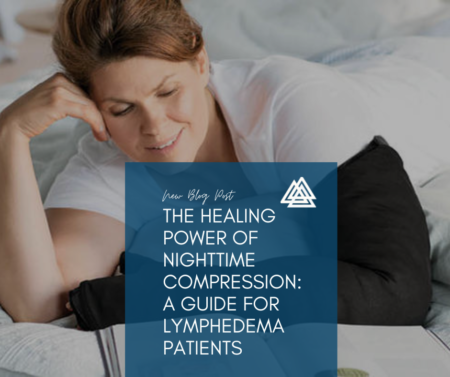 For individuals living with lymphedema, managing symptoms effectively is key to maintaining quality of life and promoting long-term health. Lymphedema, often stemming from lymph node removal or damage, results in swelling in the arms or legs due to lymphatic fluid buildup. While daytime compression garments are commonly used, nighttime compression therapy offers unique benefits that can significantly enhance treatment outcomes and overall well-being.
For individuals living with lymphedema, managing symptoms effectively is key to maintaining quality of life and promoting long-term health. Lymphedema, often stemming from lymph node removal or damage, results in swelling in the arms or legs due to lymphatic fluid buildup. While daytime compression garments are commonly used, nighttime compression therapy offers unique benefits that can significantly enhance treatment outcomes and overall well-being.
Understanding Lymphedema and Compression Therapy
Lymphedema is a chronic condition where the lymphatic system is impaired, leading to fluid retention and swelling in affected limbs. Compression therapy involves the use of specialized garments or wraps to apply pressure to the affected area, helping to reduce swelling, improve lymphatic flow, and prevent fluid buildup.
Benefits of Nighttime Compression Therapy
1. Continuous Pressure and Reduction of Swelling
Nighttime compression garments provide sustained pressure during periods of rest and sleep, when lymphatic drainage is naturally slower. This continuous pressure helps to reduce swelling overnight, promoting better fluid circulation and minimizing the risk of exacerbating lymphedema symptoms.
2. Improvement in Limb Size and Shape
Consistent use of nighttime compression can lead to measurable improvements in limb size and shape over time. By effectively managing fluid accumulation during the night, patients may experience reduced circumference and a more normalized appearance of the affected limb.
3. Enhanced Comfort and Rest
Many lymphedema patients report improved comfort and restfulness with nighttime compression therapy. By stabilizing the limb and reducing discomfort associated with swelling, patients can achieve better sleep quality and wake up feeling more refreshed.
4. Prevention of Fibrosis and Complications
Long-term untreated lymphedema can lead to fibrosis (thickening and hardening of tissue) and increased susceptibility to infections. Nighttime compression helps to mitigate these risks by maintaining optimal fluid balance and supporting healthy tissue function.
5. Support for Wound Healing
For patients with lymphedema-related wounds or ulcers, nighttime compression plays a crucial role in promoting healing. By reducing swelling and improving circulation, compression therapy supports the healing process and reduces the likelihood of wound complications.
Tips for Effective Nighttime Compression
- Consultation with a Specialist: Work closely with a lymphedema therapist or healthcare provider to determine the most suitable nighttime compression garment or wrap for your specific needs.
- Consistent Wear: Establish a routine of wearing nighttime compression consistently to maximize its benefits. Follow the recommended guidelines provided by your healthcare team.
- Skin Care: Maintain good skin hygiene and moisturize regularly to prevent irritation or skin breakdown underneath compression garments.
Nighttime compression therapy represents a valuable adjunct to daytime management strategies for lymphedema patients. By harnessing the benefits of continuous pressure during sleep, individuals can achieve improved symptom control, enhanced quality of life, and better long-term outcomes. As part of a comprehensive treatment plan, nighttime compression offers hope and support for those navigating the challenges of living with lymphedema.
For anyone affected by lymphedema, exploring the potential benefits of nighttime compression therapy with the guidance of healthcare professionals can be a transformative step towards better health and well-being. Embracing these supportive measures not only aids in managing symptoms but also empowers individuals to lead fulfilling and active lives despite the challenges posed by this chronic condition.
